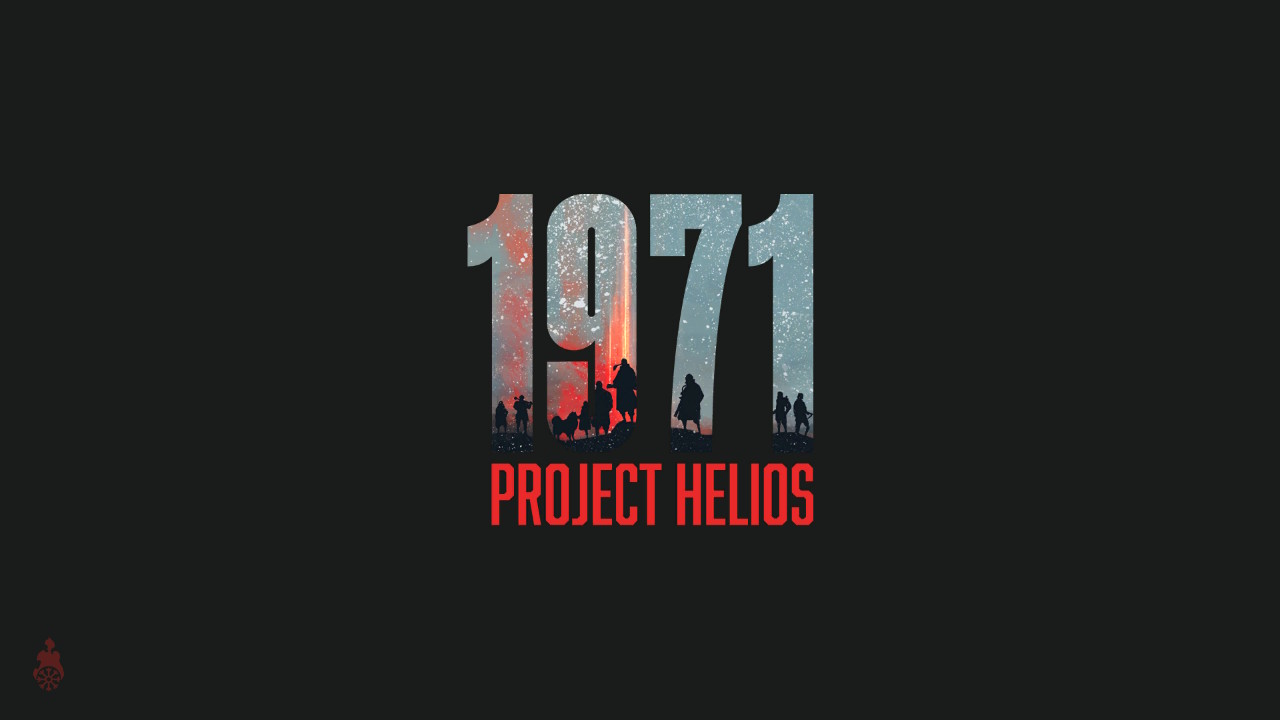[Review] 1971 Project Helios – Nintendo Switch
1971 Project Helios
Nintendo Switch
Developed By: Recotechnology
Published By: Recotechnology
Category: Strategy
Release Date: 06.09.20
1971 Project Helios for the Nintendo Switch is a frustrating game to review; it has so much potential, but much of it falls just short of being great. Most of the game’s features are solidly designed and implemented, but a little extra polish or more depth here and there would have elevated it from a decent tactical experience to a truly memorable one. As it stands, there’s nothing especially wrong with the game, it just doesn’t do enough to stand out from the crowd of squad-based tactical games.
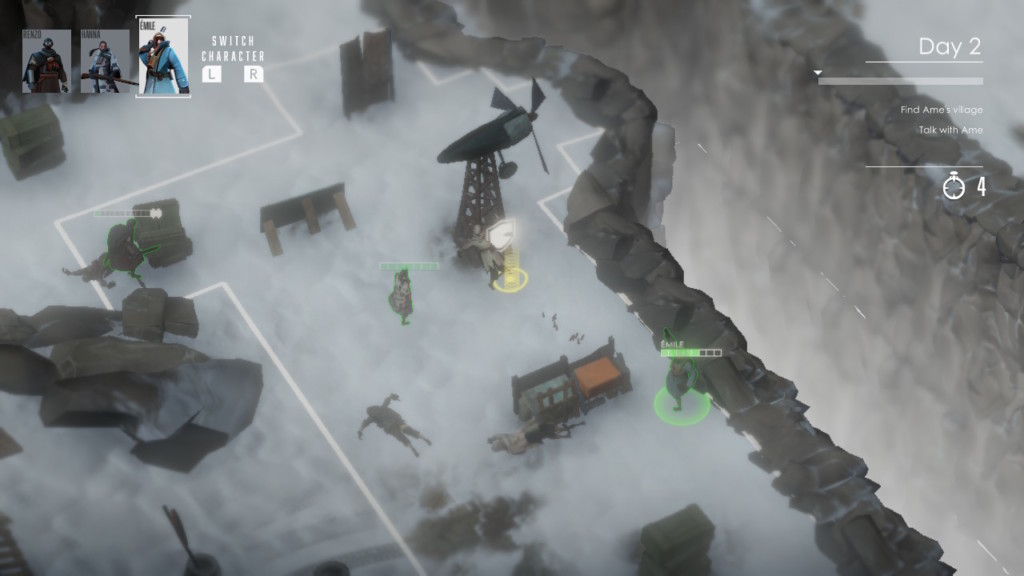
The Frozen Earth
In 1942, the world froze over. There was a silver lining, however; when the world froze, a new resource known as Fulgor was discovered which has the potential to provide the sustainable food and energy source the world is desperate for. And things are desperate – humanity is decimated, and in Europe they’re concentrated into only a handful of major settlements in addition to some small villages of survivors, bandits, and scavengers. Dr. Margaret Blythe is the world’s leading Fulgor researcher, and no one seems to know where the heck she’s gotten off to after an attack on her laboratory.
1971 Project Helios follows two groups of characters searching for Dr. Blythe for their own reasons. Emile and his wife Hanna have been ordered to find her by Butch, a raider king, in exchange for the safety of their family. Wilhelm and his squad are the remnants of the garrison tasked with defending Blythe, searching for her to serve their community and avenge their fallen comrades. They meet and form a fragile alliance after deciding they have a better chance of finding her together than as enemies – what they do when they find her? Well… they’ll figure that out when they get there.
I really like the world that Project Helios builds, but I never really felt like it was explored as fully as it could have been. Most of the backstory is revealed through documents scattered throughout the game’s nine levels, while the in-game dialogue tends to focus only on the events of the game. Perhaps I’m just a victim of my own expectations; at first glance, I thought I was looking at Wasteland 2, except in a frozen wasteland instead of a nuclear one. The game never made that promise, and it’s hard to live up to that level of detail and craft in terms of side quests, lore, and narrative branching. Project Helios does have 3 different endings, but it’s a fairly linear experience to get there.
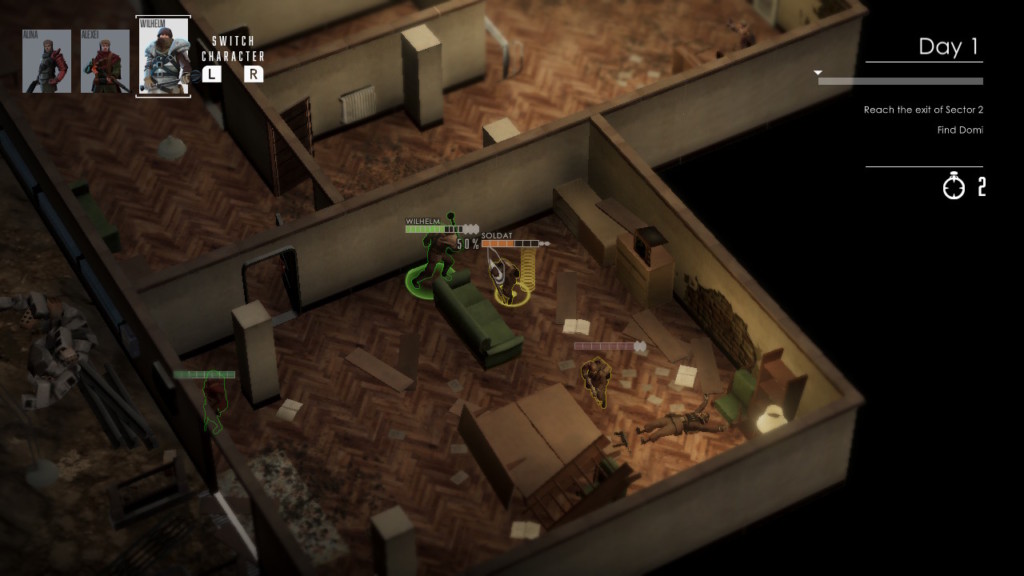
Cold, Calculated Maneuvers
The gameplay does have a little bit of a Wasteland 2 influence; it mixes some exploration with tactical combat, but it doesn’t have much depth at either. There are nine levels to the game, and you lead your group through them encountering and dispatching resistance along the way, as well as collecting items and Fulgor. The combat is grid-based and very much similar to a Wasteland 2 or X-Com. You maneuver your characters around the grid, trying to place them behind cover as they approach enemies, which reduces the chances of being hit – except for grenades or melee weapons. They always hit. You and the enemy AI alternate turns moving your squad. Characters have two action points; they can only use one point to attack per turn, the other can be used for either moving or special abilities like overwatch or fortifying their position.
In addition to the tactical aspects of just setting your characters up properly, you’ll occasionally have to deal with the effects of the cold. Battles in outdoor areas will see your characters take damage from the frost every turn until the battle ends. The good news is that your characters heal back to full health after every battle – while that doesn’t make a lot of sense from a lore perspective, it is a fairly welcome mechanic for the gameplay, especially in the early going.
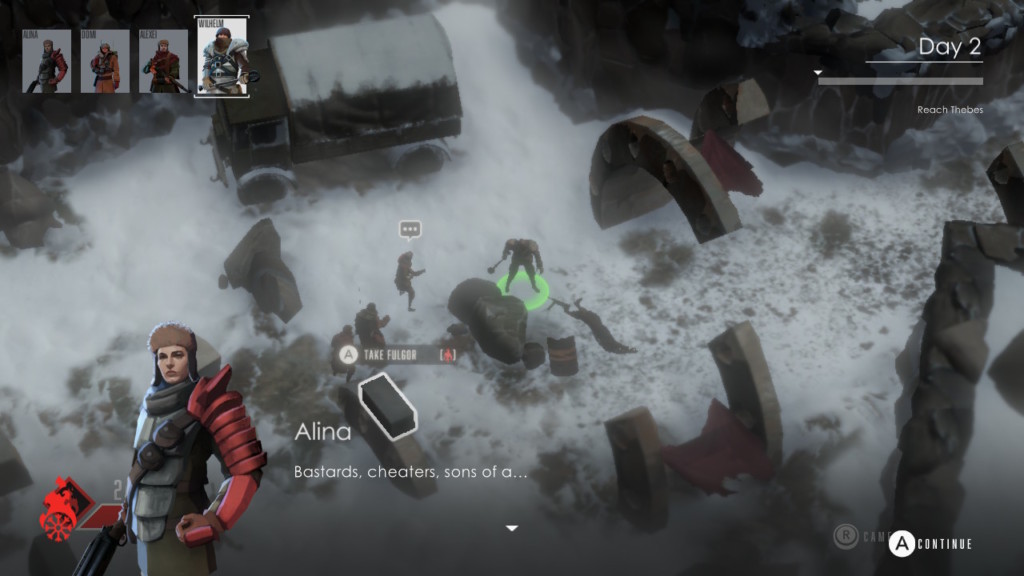
Fill Up That Fulgor
The first two levels kind of suck, since post-battle auto-healing is the only way to actually heal yourself. The battles are fairly simple and straightforward, but if you find yourself outnumbered or fumble with the game’s controls at all and find yourself accidentally out of position, you’ll get hammered. An option to undo a move would be extremely welcome to me, is what I’m saying. The controls aren’t really finicky, but sometimes if you’re looking at the field from the wrong angle you might misinterpret which space your unit will occupy. It’s mostly frustrating because if one of your characters runs out of HP in those levels, it’s an automatic game over and you have to start from your last autosave. The good news is the game autosaves after every single fight, so you never have to backtrack too far.
Eventually, though, you get a supply of Fulgor to manage. Fulgor can be used both to heal your characters’ HP and revive them if they should happen to fall. It makes the game more forgiving, and a little less tedious than it may seem at first given the unforgiving nature of dying before you get your Fulgor tank. It still pays to be conservative with your Fulgor, however, as there is a fairly limited supply of the stuff in the game. The farther you get into the game, the rarer and more spread out it gets.
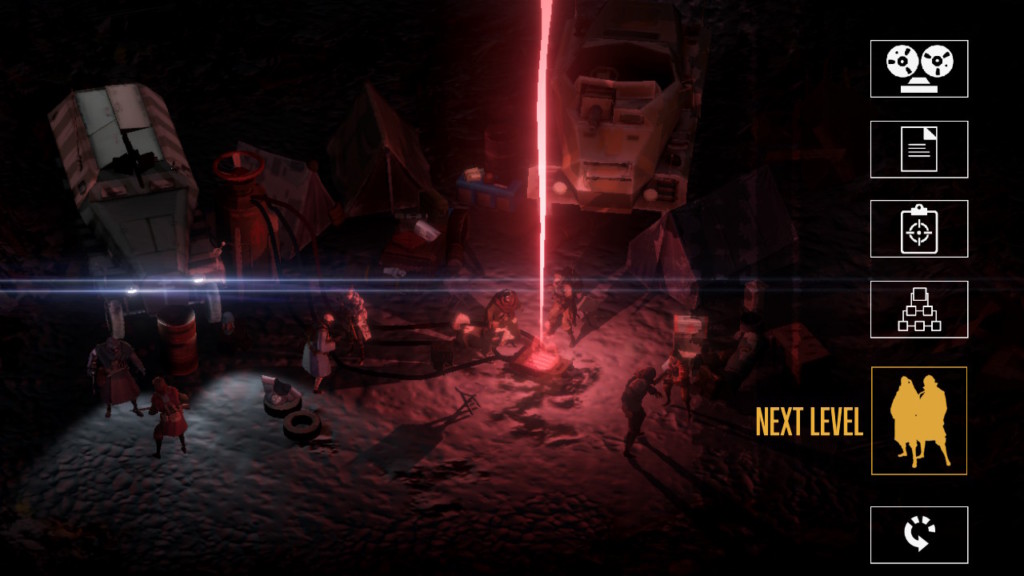
Limited Character Creation
Perhaps the biggest disappointment in the game is the very limited degree of character customization it offers. Each character does have their own skill tree, based on their weapon type and class. You can alter your skills by changing out the equipment on your skill tree, but you can never have more than three skills on your tree active at one time, which makes the game feel very limited. You don’t level up or get stronger or anything, so there isn’t any character progression, only different loadouts. And it’s not like the skill trees are especially large to begin with; you’ve only got maybe six skills to choose from. It’s an area of the game that’s just seriously lacking depth.
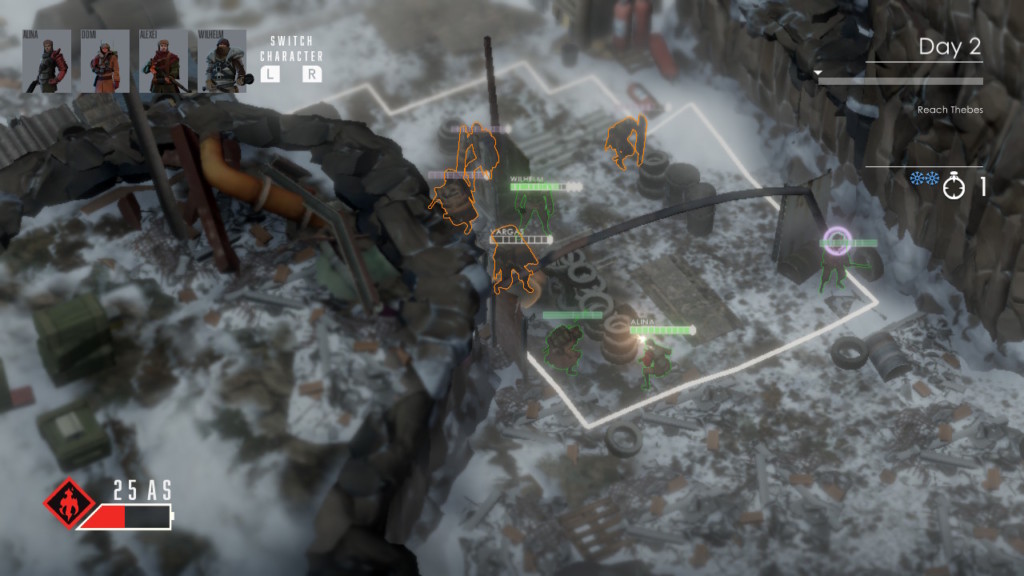
Barren Landscapes
Graphically, the game doesn’t look amazing. Not that I want to keep harping on the unfair comparisons to Wasteland 2 that I keep making, but that game came out in 2014 and it looks better than 1971 Project Helios. The backgrounds are barren and the character models are hard to tell apart just by looking at them, and things take another step down if you’re playing undocked. The character portraits are gorgeous, but that’s hardly enough to save the game’s visuals all on its own. The soundtrack is something of a mess, too – the exploration music is fine, but when battle starts the game blares out these intense, noisy dubstep tracks that just don’t fit the game at all. It is possible that I only feel that way because I don’t particularly care for dubstep personally, however.
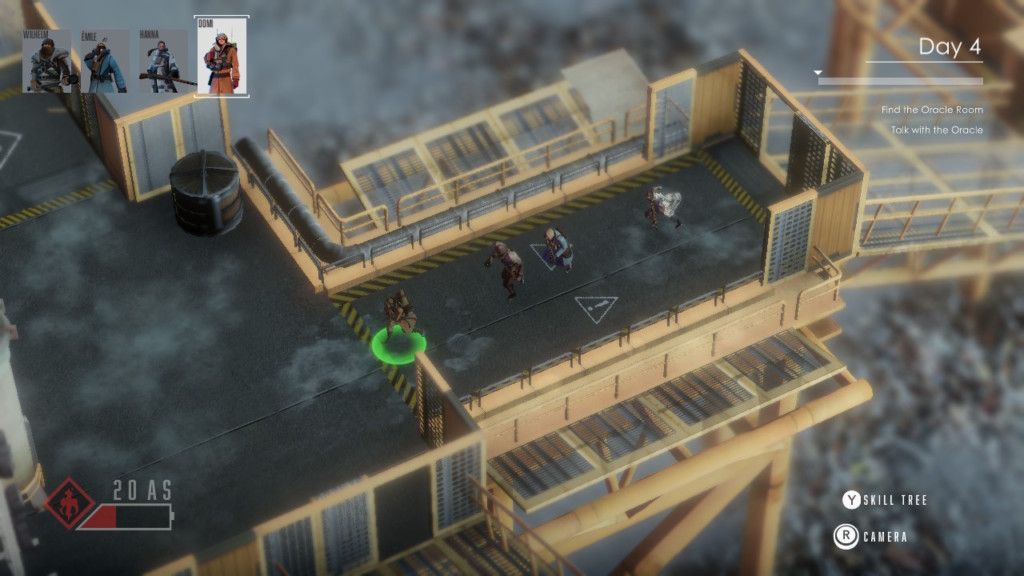
The Glass is Half Empty, and Half Fulgor
I really wanted to like this game a lot; at first glance, as I said, I thought it looked similar to Wasteland 2, which I absolutely adore. 1971 Project Helios bears a passing resemblance to that game, but it lacks the depth that made that game so good. Its story is fine, if a little linear. The combat system is solid, if unspectacular, but the lack of depth in the character customization system makes the game start to feel fairly stale pretty quickly. Topping the experience off are some lackluster graphics and a soundtrack that didn’t catch my ear, completing an experience that is competently built but nonetheless thoroughly mediocre.





Buy 1971 Project Helios
Digital – $39.99
Follow Recotechnology
*A game code was provided for review purposes.

